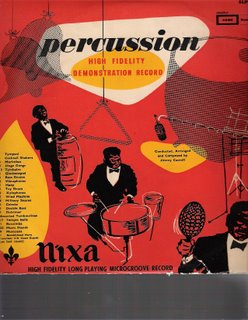
A radio show from 1978 on BBC Radio One. I think it was called "Star Choice" - where pop celebrities of the day played DJ for two hours and raided the BBC Archives. It was Ian Dury's turn and a wonderful eclectic mix it was too -including Max Miller , Roland Kirk, Kay Starr and Albert Ayler to name but a few.
Wikipedia says -
"Dury was born in north-west London at his parents' home at 43 Weald Rise, Harrow Weald, Harrow (although he often pretended, and indeed all but one of his obituaries in the national press stated, that he was born in Upminster, Havering). His father, William George Dury (born 23 September 1905, Southborough, Kent; died 25 February 1968), was a bus driver and former boxer, while his mother Margaret (known as Peggy, born Margaret Cuthbertson Walker, 17 April 1910, Rochdale, Lancashire) was a health visitor, the daughter of a Cornish doctor, and granddaughter of an Irish landowner.
William Dury trained with Rolls-Royce to be a chauffeur, and was then absent for long periods, so Peggy Dury took Ian to stay with her parents in Cornwall. After the Second World War, the family moved to Switzerland, where his father chauffeured for a millionaire and the Western European Union. In 1946 Peggy brought Ian back to England and they stayed with her sister, Mary, a physician in Cranham, a small village bordering Upminster. Although he saw his father on visits, they never lived together again.
At the age of seven, he contracted polio; very likely, he believed, from a swimming pool at Southend on Sea during the 1949 polio epidemic. After six weeks in a full plaster cast in Truro hospital, he was moved to Black Notley Hospital, Braintree, Essex, where he spent a year and a half before going to Chailey Heritage Craft School, East Sussex, in 1951. Chailey was a school and hospital for disabled children, and believed in toughening them up, contributing to the observant and determined person Dury became. Chailey taught trades such as cobbling and printing, but Dury's mother wanted him to be more academic, so his aunt Moll arranged for him to enter the Royal Grammar School, High Wycombe which he attended until the age of 16 when he left to study painting at Walthamstow Art College, having gained GCE 'O' Levels in English Language, English Literature and Art.
From 1964 he studied art at the Royal College of Art under British artist Peter Blake, and in 1967 took part in a group exhibition, Fantasy and Figuration, alongside Pat Douthwaite, Herbert Kitchen and Stass Paraskos at the Institute of Contemporary Arts in London. When asked why he did not pursue a career in art, he said, "I got good enough [at art] to realise I wasn't going to be very good."[citation needed] From 1967 he taught art at various colleges in the south of England.
Dury married his first wife, Elizabeth 'Betty' Rathmell (born 12 August 1942, Leamington Spa, Warwickshire), on 3 June 1967 and they had two children, Jemima (born 4 January 1969, Hounslow, Middlesex) and the recording artist Baxter Dury. Dury divorced Rathmell in 1985, but remained on good terms. He also cohabited with a teenage fan, Denise Roudette, for 6 years after he moved to London."
Ian Dury's Choice - Side OneIan Dury's Choice - Side Two























